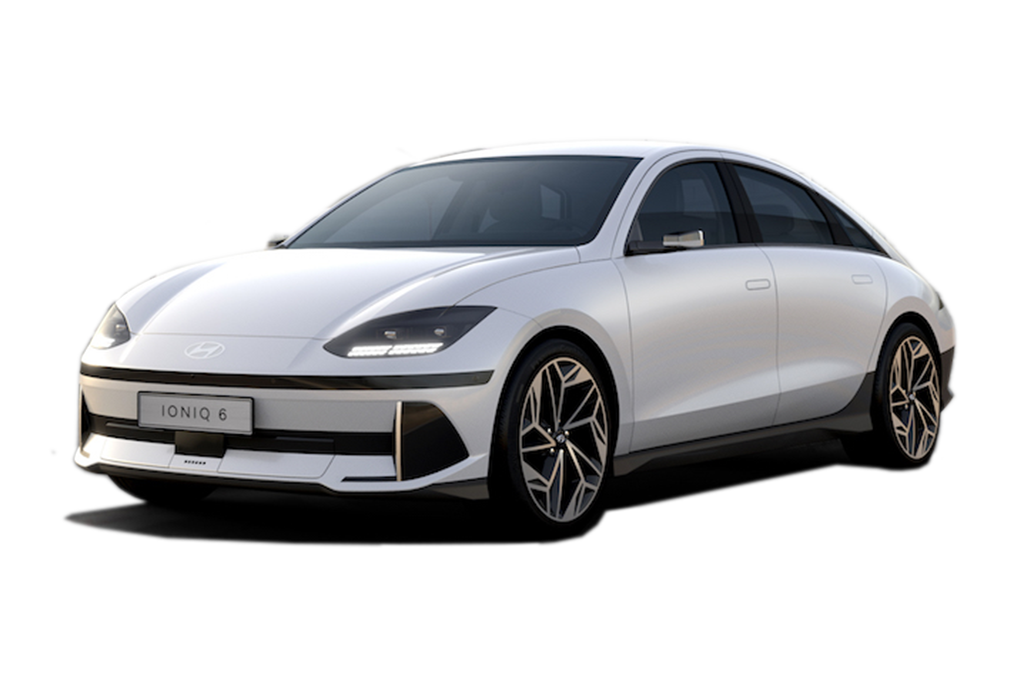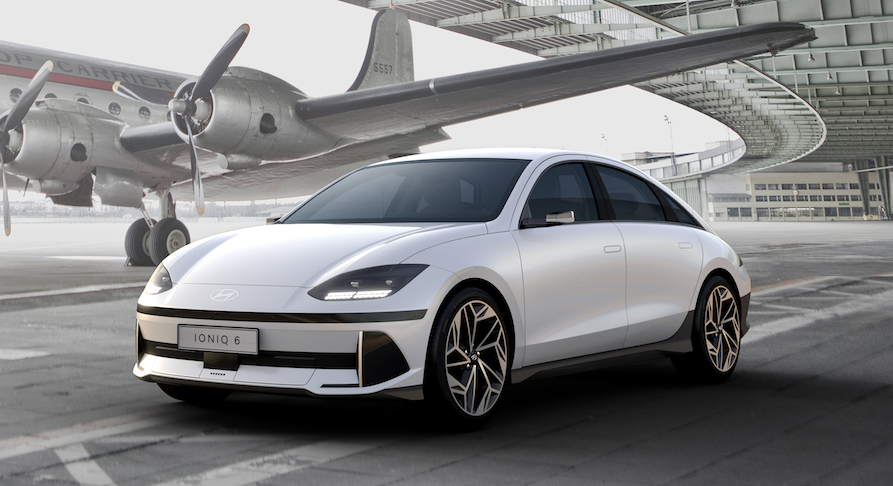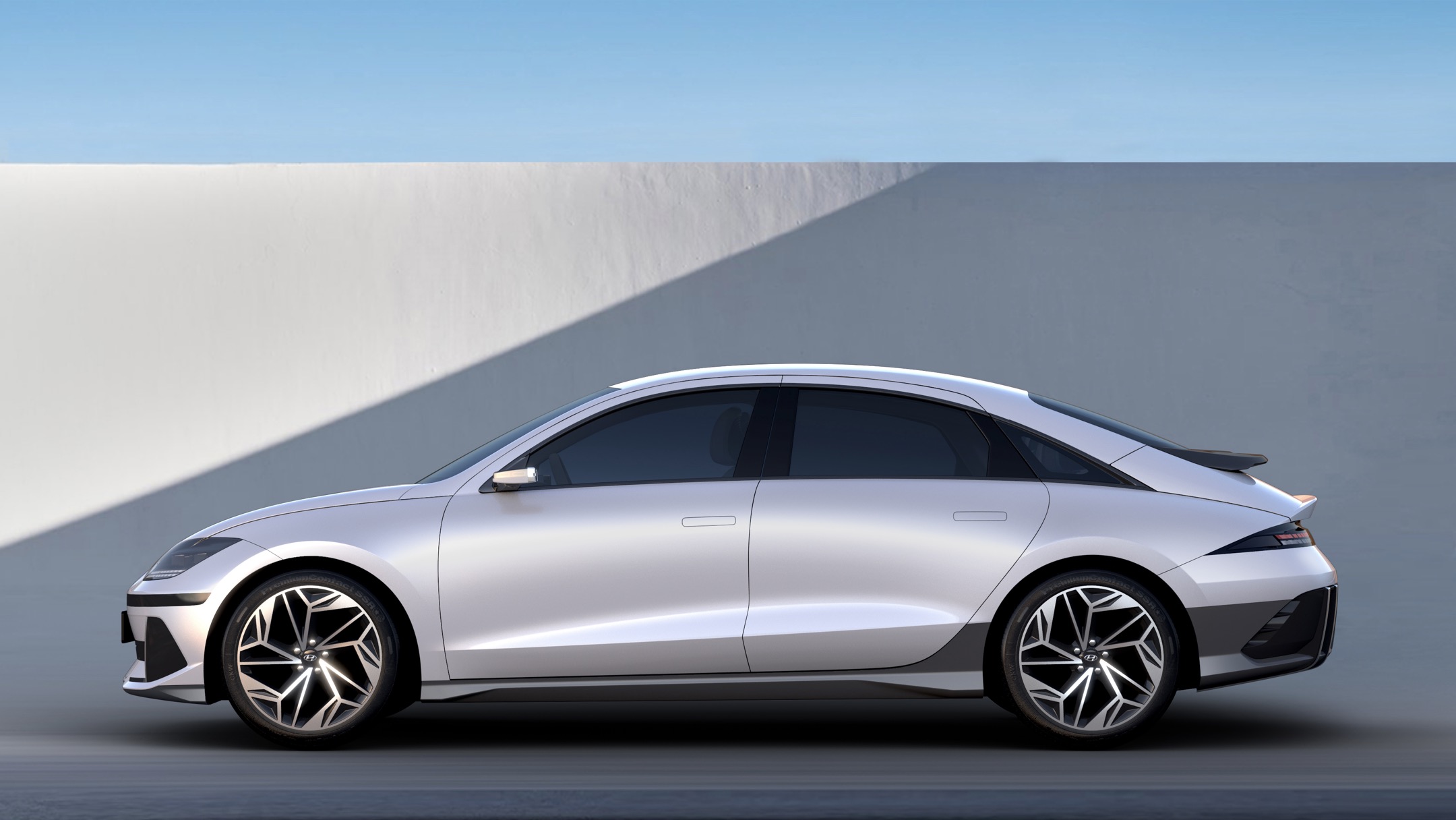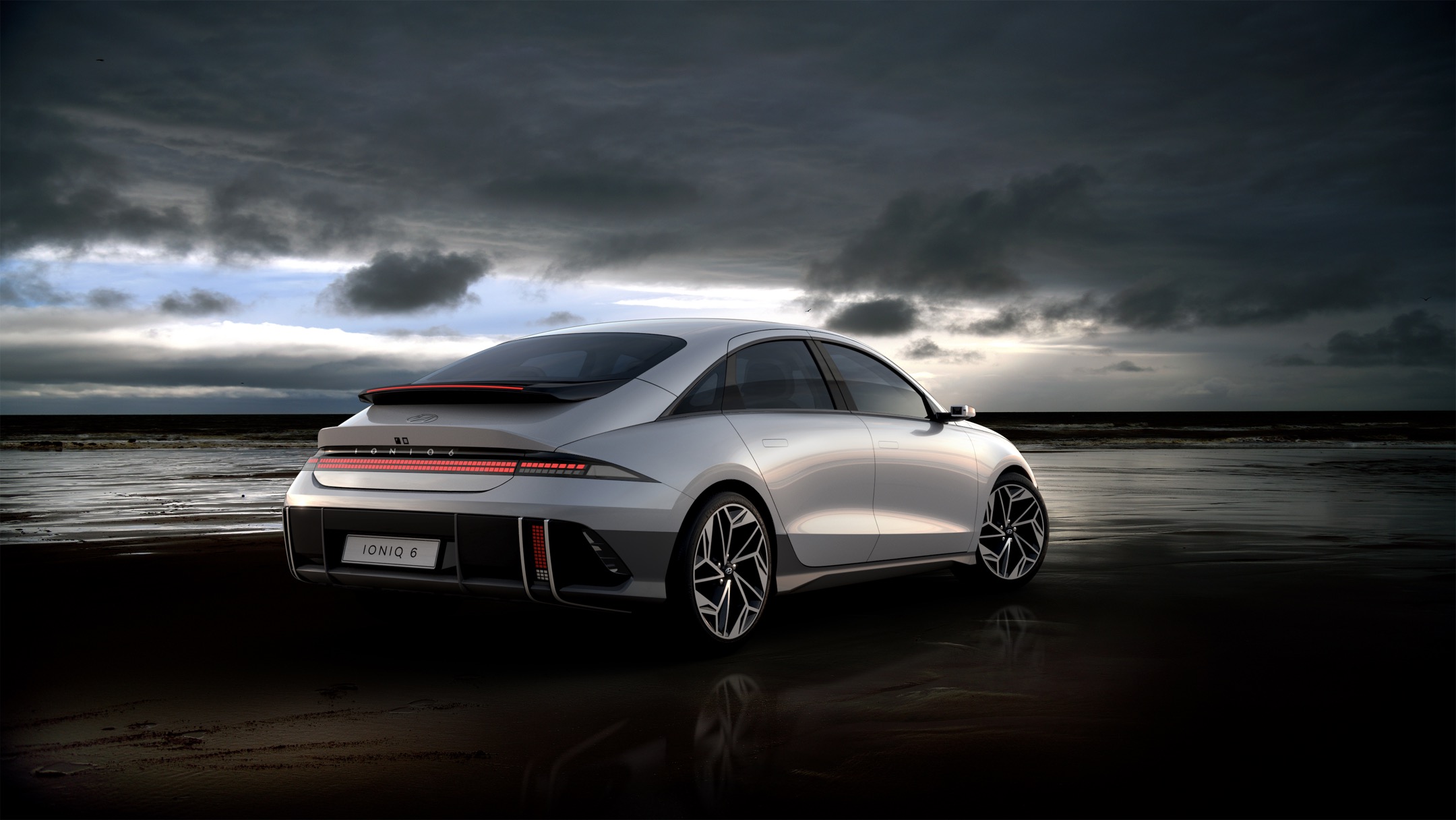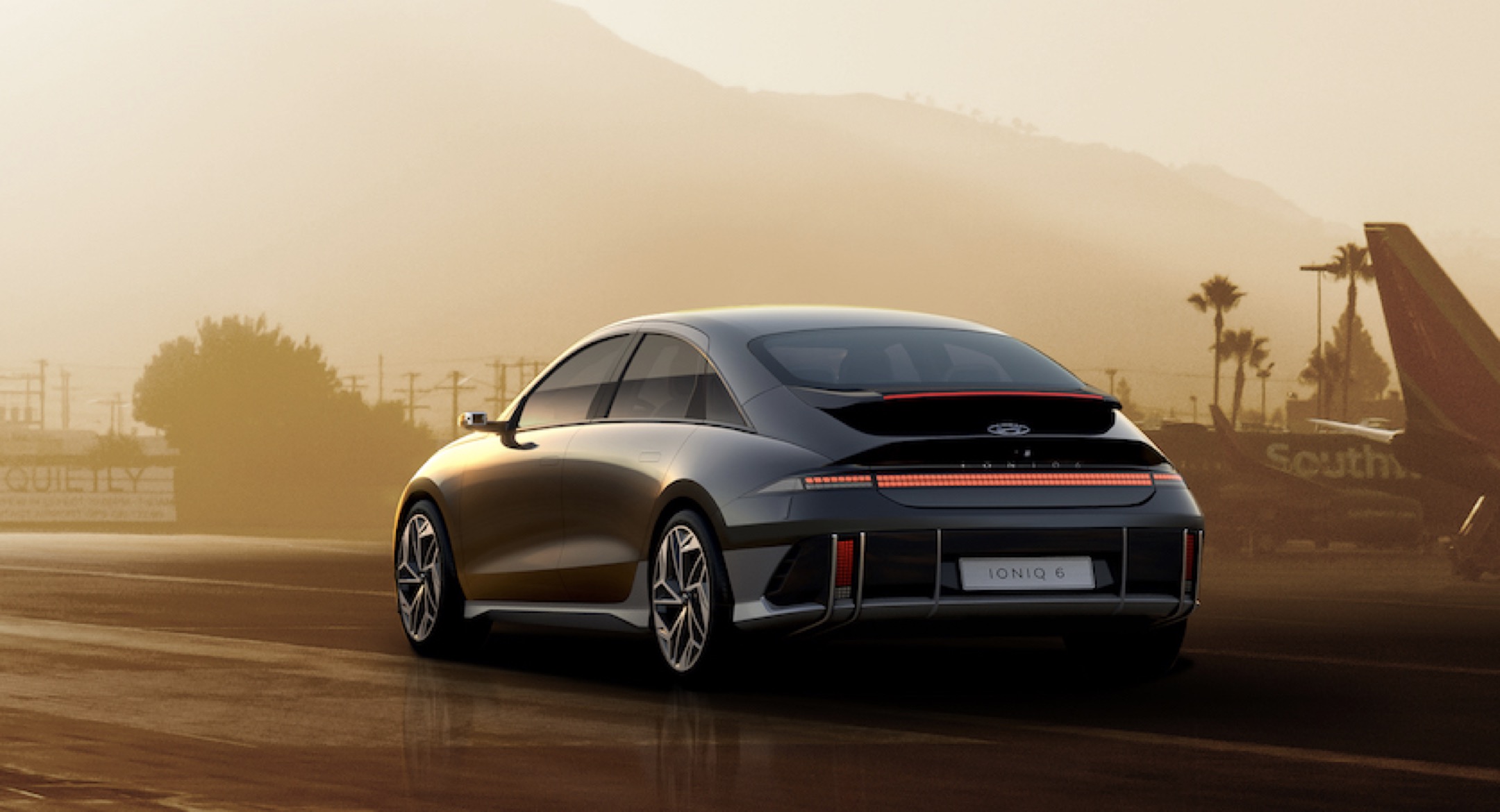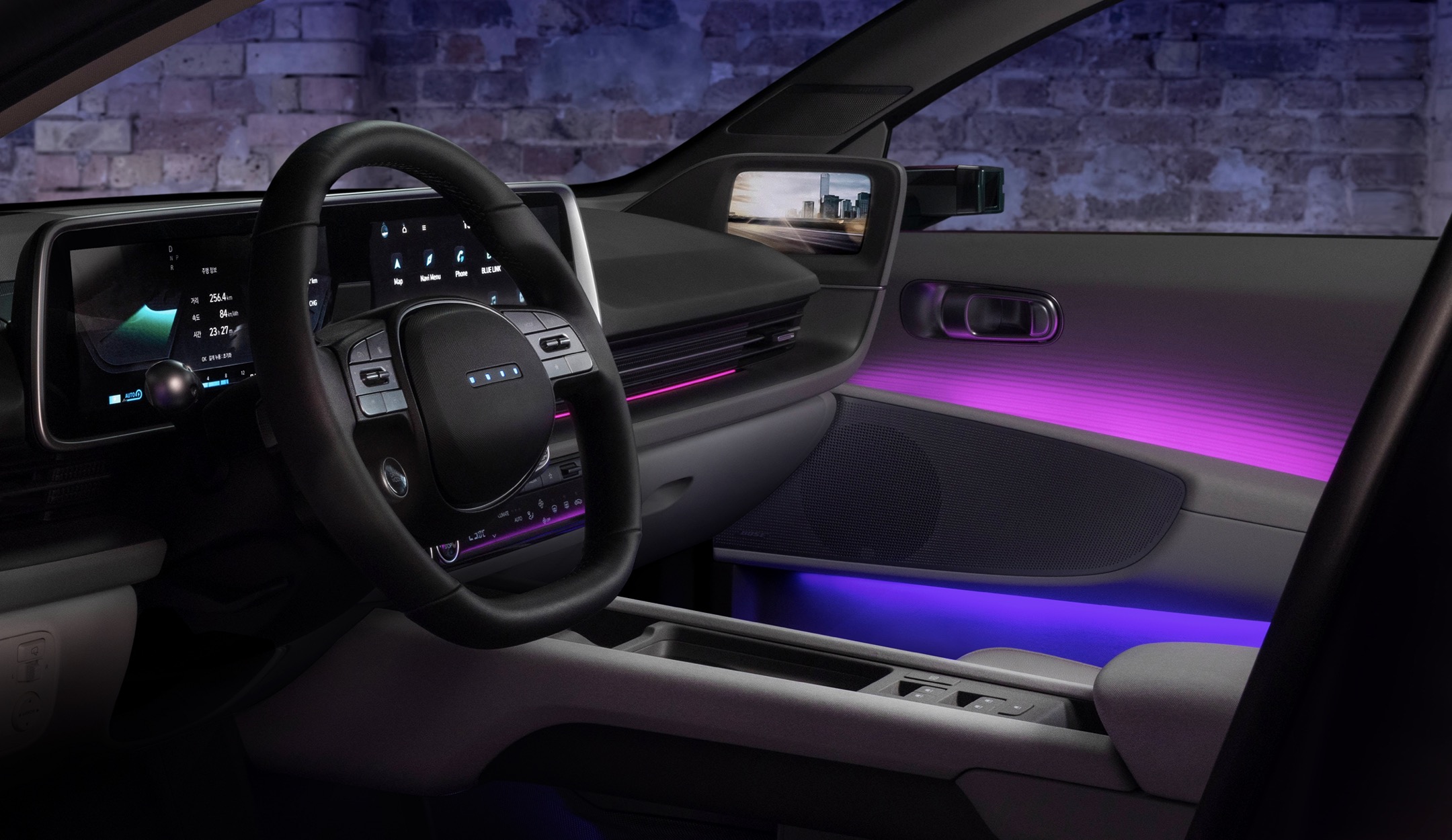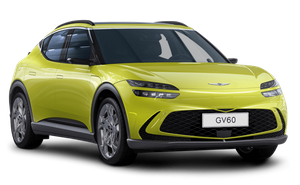Hyundai’s big Kia Niro EV plan is to create a separate IONIQ sub-brand for its all-electric range with odd number cars (3,5 and 7) all taking the form of CUVs and SUVs and all even number cars (4,6 and 8) all saloons and coupes. The next two models to come off the Hyundai drawing board will be the IONIQ 6, which is set to arrive later this year, and the IONIQ 7, which is expected early 2024.
IONIQ 6 design
Kia Niro EV now unveiled it all its glory, the IONIQ 6 is a striking car that, at first glance, borrows very little from its portlier IONIQ 5 stablemate. Unlike other automotive brands, Hyundai is deliberately avoiding the ‘Russian Doll’ approach of building smaller and larger versions of effectively the same design. Instead, Hyundai’s design bosses are pursuing what it calls the ‘chess board’ approach, where all the pieces are part of the same set but have completely different designs.
Based heavily on the Prophecy concept car, the IONIQ 6 has been designed from a completely blank sheet of paper. While it shares its high-tech underpinnings with the IONIQ 5 (and Kia EV6), that’s where the similarities end. Like the concept car, the IONIQ 6 is a modern interpretation of the streamliner, a style of car inspired by the sleek, aero-friendly shapes of early aeroplanes. In stark contrast to the IONIQ 5, which has the aerodynamic efficiency of a filing cabinet, the 6 is effectively one long curve, punctuated by details and creases that help the air flow over and away from the car.
At the front, the bumper features large air intakes at either edge that channel air around the sides and through the wheel arches to keep the brakes cool. The lower element of the bumper features the same active shutters as the IONIQ 5 that can suck in cool air to keep the battery at the perfect temperature.
One of the few design elements carried over from the IONIQ 5 (and set to appear on all IONIQ models) are the pixel icons. Cleverly, where the IONIQ 5 has a cluster of five pixels in each application, such as on the door handles, the IONIQ 6 has six. Another detail transferred from the 5 is the gloss black horizontal strip that spans the width of the car. It houses a mass of sensors and cameras and avoids the need for bumpers to have additional holes added for parking sensors.
While the whole car is a striking piece of design it’s the IONIQ 6’s ‘ducktail’ rear end that provides the biggest talking point. Although all the required elements are there, including a fancy full-width pixel LED strip that performs a fancy light display when you unlock the car, the layout and positioning of those elements is somewhat unorthodox. The roofline plunges to the ground, interrupted by a winglet spoiler that contains another full-width LED strip. Strong vertical strips break up the large void in the rear bumper arrangement and complete what is one of the bravest pieces of automotive designs we’ve seen in a long time.
In terms of dimensions, the IONIQ 6 is 220mm longer than the 5, 10mm narrower and 110mm lower. Despite being longer than 5, the 6 actually has a 50mm shorter wheelbase. According to Simon Loasby, head of styling at the Hyundai Design Centre, this change to the platform was needed to create the flowing roofline and allow for the longer, 1,055mm overhang at the rear. The IONIQ 6 will launch with two wheel size options, 20-inch alloy wheels with 245/40 R20 tyres and 18-inch alloy wheels with 225/55 R18 tyres.
Like the IONIQ 5, the 6 is packed with clever and intricate details that will probably pass unnoticed by 80% of owners. For example, the shark fin radio antenna on the roof and housings for the mirrors are made from semi-translucent plastic that allows you to see all the workings within - an idea inspired by Apple’s original see-through 1998 iMac, according to styling boss Simon Loasby.
IONIQ 6 interior design
Inside, the IONIQ 6 borrows features from the IONIQ 5, but as with the exterior, it has a host of unique and bespoke elements. The most noticeable is the dashboard, which features winglets at either end that house screens for the optional digital wing mirrors. Inspired by the winglets first seen on the Boeing 747-400. The design places the screens at a more natural height than other systems, and looks a far more elegant solution to the screens offered by Audi and Genesis.
The main displays follow the same form as the IONIQ 5s with two 12-inch screens incorporated into one frame. As with the IONIQ 5, a second row of physical and haptic buttons sit below the main touchscreen and control climate functions.
One noticeable difference between the IONIQ 6 and 5 is the centre console, which takes the form a high but flat structure. According to Hyundai’s design team, the design came about after driving a number of competitor cars. During the research phase, designers found that flat surfaces were almost impossible to find. Laptops would slide off into the footwells and even fast food boxes would need to be balanced with precision to avoid ending up on the seat or in the driver’s lap. As a result, the centre console is ruler-straight and can happily support both a Mac and a Big Mac safely and securely.
As with the exterior, the cabin is packed with lovely touches. The LED ambient lighting is more prominent and widespread than it is in the IONIQ 5, while the trims and fabrics feel a notch higher in terms of quality. The steering wheel, for example, features four illuminated pixels in the centre that flash when the car is being charged. When the fourth light stops flashing, the battery is full.
IONIQ 6 practicality
In terms of space, the IONIQ 6 is, on the whole, highly impressive. Despite being 110mm lower than the IONIQ 5, front and rear seat passengers enjoy first-class levels of space. The headlining is cleverly sculpted to carve out an extra few millimeters of space and although it doesn’t have the warehouse feel of the IONIQ 5, the 6 is anything but cramped.
However, where the IONIQ 6 can’t defeat the laws of physics is in the boot. The ducktail design might be aerodynamic, but it isn’t particularly luggage-friendly. The boot opening is low and shallow and, combined with the E-GMP platform’s bafflingly high floor, means that getting big stuff inside the IONIQ 6 will be a challenge. That said, the actual volume (which Hyundai has yet to put a figure on) appears to be on par with other saloons of the same size.
IONIQ 6 - battery and range
In terms of mechanical specification, the IONIQ 6 is be very similar to the IONIQ 5. Which, given that they share their underpinnings in the form of the brand’s E-GMP platform, isn’t too surprising.
The IONIQ 6 will come with the same 800 volt charging system that will allow it to charge to 80% in under 20 minutes with a peak DC charge rate of around 232kW. Initial versions are expected to come with a 77.4kWh pack and have the option of dual motor all-wheel drive. However, unlike its smaller stablemate, the IONIQ 6 is unlikely to be offered with an entry-level 58kWh pack.
As for range, the IONIQ 6’s smoother lines will almost certainly make it a more efficient car. Although Hyundai has yet to reveal any consumption figures, two-wheel drive versions could offer up to 330 miles of range.
IONIQ 6 UK on sale and price
Hyundai is planning to launch the IONIQ before the end of the year and anticipates that the UK market could start seeing deliveries early next year. Given the fact that it will sit above the IONIQ 5 in the range, we’d expect prices to start from around £50,000 for the entry-level rear-wheel drive model, rising to around £60,000 for the range-topping models.










